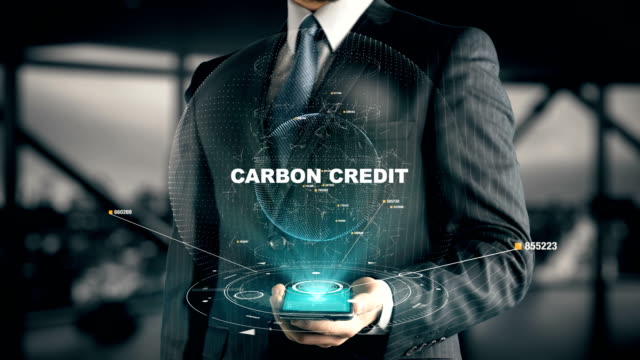CARBON CREDIT- AN ASSET, NOT A LIABILITY

The looming environmental impact of massive industrialization has been a concern worldwide and it’s amplified instances cannot be neglected. Countries across the world have been taking cognizance, including India, which has been actively inclined towards mitigating the environmental adversities. Recently, the Government of India has taken measures towards introduction of a domestic carbon market. The Bureau of Energy Efficiency (BEE), India, presented a draft blueprint for the phased introduction of a national Cap-and-Trade system in India, providing for the introduction of a voluntary market in the first phase. Further an Amendment Bill to the Energy Conservation Act, 2001 has been adopted by the Lower House of the Parliament (Lok Sabha) which provides the legal basis for the establishment of a voluntary carbon credit trading scheme. The Bill would soon be presented before the Rajya Sabha.
The concept of ‘carbon credit’ or ‘certified emissions reduction (CER) credits’ have emerged since the advent of Kyoto Protocol and the same has been gaining momentum. The proposal to introduce a domestic market is going to incentivize Indian companies to adopt eco-friendly industrial processes and would eventually help the country in limiting its Green House Gas (GHG) emissions.
UNDERSTANDING THE BASICS:
1) What is ‘carbon credit’ or ‘certified emissions reduction (CER) credit’?
‘Carbon credit’ or CER is a certificate awarded for reduction in emission of Green House Gases.
1 credit=" 1" ton of GHG
These are issued either by the government or any agency authorized by the government. Alternatively they can also be bought from the voluntary market.
2) What is the mechanism of carbon credit?
The emissions from industries have a ceiling limit assigned by the government, the companies are thus expected to adopt processes so as to limit the emissions within the cap and if not, they can purchase carbon credits in proportion to the excessive emissions. On the other hand, companies are also awarded carbon credits if they establish that they have adopted measures in their industrial process that have resulted in reduction of overall GHG emissions.
3) What is ‘cap - and – trade’ system?
It is a system in which the upper limit of emissions from an industry or group is set (cap). Thus the company must either abide by that ceiling limit, and if not , enhance its limit by additional purchase of carbon credits (trade). This system incentivizes the companies to reduce the emissions, thereby allowing them to monetize their unutilized credits if desired.
4) What is meant by carbon offset?
Carbon offset means the reduction of emission of carbon dioxide or other GHG as a compensation towards the emission made otherwise, thereby neutralizing the carbon footprint. The most generic and cost effective form of offsetting is reforestation, as trees are the biggest contributors in absorbing the atmospheric carbon dioxide.
5) What is meant by retiring carbon credit?
Retiring a carbon credit means when it is purchased it is taken off the market and would never be traded or swapped again. This way only the purchaser can claim ownership of reducing the emission and will then not be able to resell this in the voluntary market.
6) Does buying carbon credits or offsets constitute valid CSR expenditure u/s 135 of the Companies Act, 2013?
The law as on date, does not have explicit provisions in this regards, which makes it a matter of judgement. Carbon credits, as seen above can be purchased for various reasons i.e. in order to comply with emission guidelines or merely as an investment/ tradable commodity.
Activities conducted with an aim to improve and sustain the environment, unambiguously constitute eligible CSR activities as per Schedule VII of the Act, however the intent with which those activities are conducted should be the testifying parameter along with others, to qualify or disqualify it as CSR expenditure.
In my opinion, buying Carbon credits due to the exhausted emission limit may not qualify as a CSR expenditure. However, in case where a credit is purchased merely as an investment and is thereafter immediately retired, or a carbon offset purchased otherwise than to meet some legal obligation, could qualify, other requisite parameters being met. This being a subjective matter, framing a generic opinion would be critical.
Some critics and environmentalist negate the concept of carbon credits, addressing them as an illusion. The fraudulent practices in the past, of various corporates w.r.t. carbon trading leads to introspection. However, in this fast paced world, industrialization is inevitable, thus any actions to either compensate for its adverse impact or to curb, if not stop its adversities, would be welcomed, provided the spirit behind these actions is intact . With the increasing global warming, limiting the footprint is a challenge for each country. Environmentally sustainable practices are being adopted globally. Statistics witness how various Indian corporates have already profited considerably in the past by selling their carbon credits. The increasing environmental awareness amongst corporates in India would give them an edge in the market allowing them to monetize as required. Thus, ‘carbon credit’ though a scientific term, has much relevance in strategic decision making.
In the light of this, a domestic market would indeed provide a platform for competitive trading, but the social obligation of retaining the true spirit behind this initiative is conferred amongst each of its participants. The ultimate beneficiary should be the environment!
Ravina Shah | Partner | RBKRS & Associates LLP

